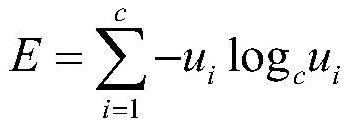A prediction method of airspace sector congestion degree based on random forest
A technology of airspace sectors and congestion levels, applied in traffic flow detection, traffic control systems of road vehicles, instruments, etc., can solve problems such as lack of application methods and lack of research, and achieve scientific and reasonable prediction results
- Summary
- Abstract
- Description
- Claims
- Application Information
AI Technical Summary
Problems solved by technology
Method used
Image
Examples
Embodiment Construction
[0045] The present invention is described in detail below in conjunction with accompanying drawing and embodiment:
[0046] Such as figure 1 As shown, the airspace sector congestion prediction method based on random forest includes the following steps:
[0047](1) Read in historical data: process the sector trajectory data (experiments using one sector’s data for one week), and include the week, time period, sector capacity saturation, potential conflict times, sector aircraft density, sector The seven indicators of the average speed saturation of regional aircraft and the average distance between aircraft in the sector are arranged from left to right to form the first row of the data set. In each time period, the sector contains a data set of five index data: sector capacity saturation, potential conflict times, sector aircraft density, sector aircraft average speed saturation, and sector aircraft average distance.
[0048] (2) Data preprocessing (discretization): The five ...
PUM
 Login to View More
Login to View More Abstract
Description
Claims
Application Information
 Login to View More
Login to View More - R&D Engineer
- R&D Manager
- IP Professional
- Industry Leading Data Capabilities
- Powerful AI technology
- Patent DNA Extraction
Browse by: Latest US Patents, China's latest patents, Technical Efficacy Thesaurus, Application Domain, Technology Topic, Popular Technical Reports.
© 2024 PatSnap. All rights reserved.Legal|Privacy policy|Modern Slavery Act Transparency Statement|Sitemap|About US| Contact US: help@patsnap.com










